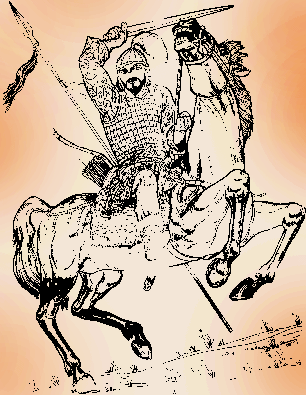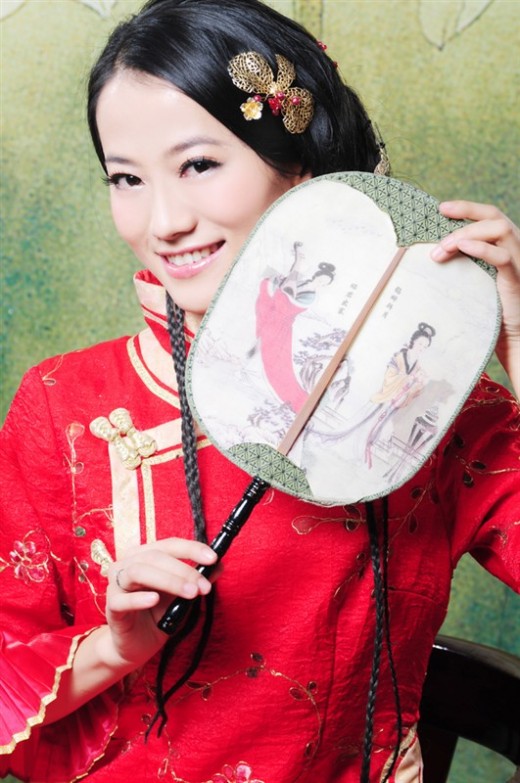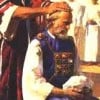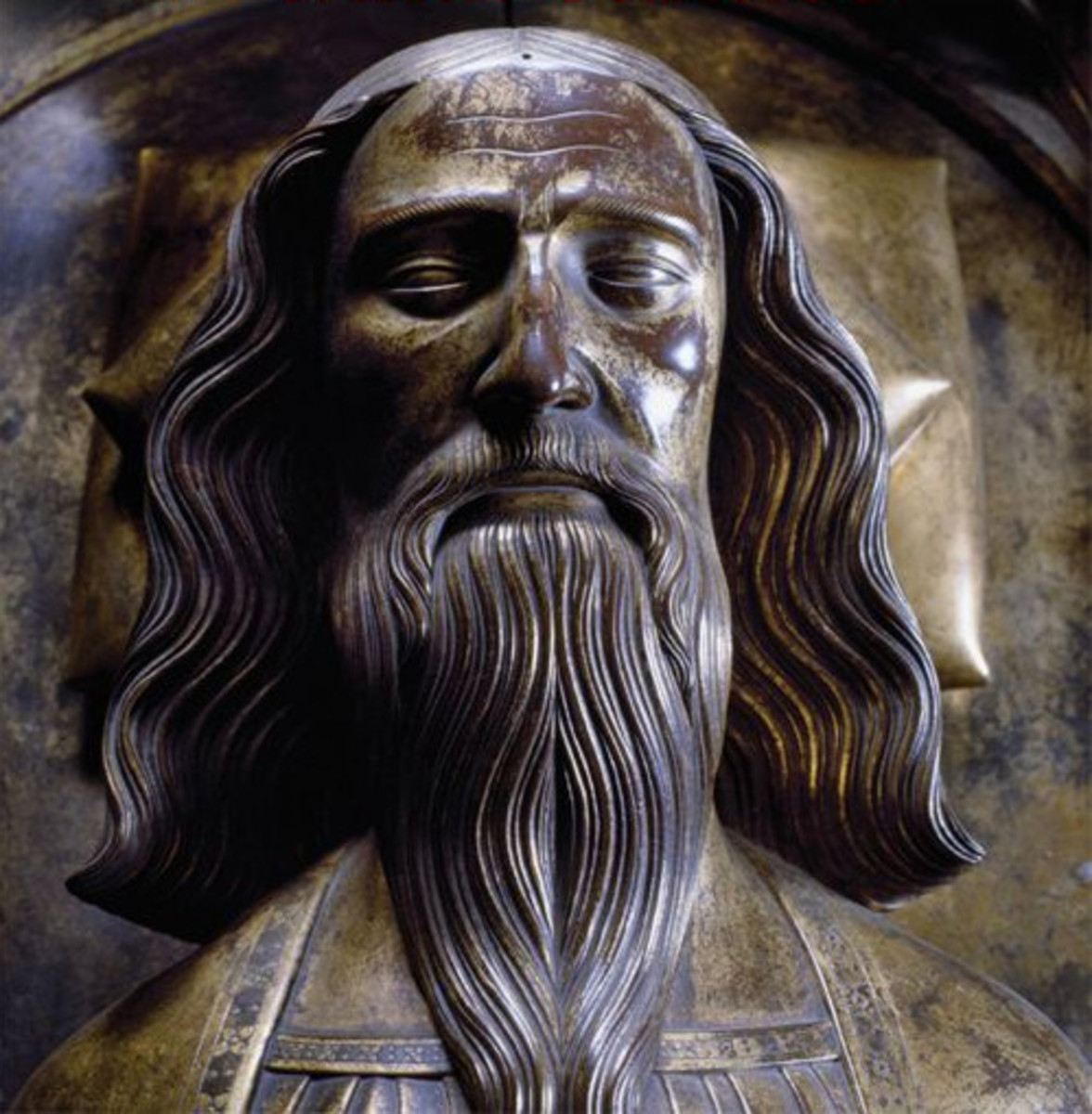The Kahana In China
The
story I’m about to relate is primarily intended for members of my family but
even though it is for their benefit, I
think others will find this particular historical tale fascinating. Over the years I have gathered many stories
from family connections that have been scattered
across the globe. One of the most significant historical
reminisces concerned Mar Zutra Kahana, also known as Zutra II. Most people don’t know the impact he had on
the world. In fact, most people don’t even
know who he was. In leading an insurrection against his
Sassanid overlords, he actually won freedom of his people for just over seven
years but the actual history goes even
further and deeper than that. So bold and daring was his general
that together they practically brought
down that empire and had it not been for the betrayal of the Byzantine Emperor
Anastasius, they probably would have succeeded.
But that is a story for a later time.
In fact the manuscript has already been written and I’m presently seeking a literary agent. It is definitely a story that needs to be
told even if the repercussion is that it will make us rethink our current
knowledge of eastern civilization. Let’s
just say that if it was a movie it would reduce Braveheart to nothing more than
an interesting episode of inconsequence. I may have spent most of the last two years in China but I don't believe I'm the first of the Kahana family to have done so. And this is the reason why....

As enthralling as the legend of the battles were, nothing compared to the revelation concerning the intrigue, political manipulations, and corruption. And then there was the issue of Zutra's two wives; as different as night is from day. One is fully exposed in present historical writings, even though the Rabbis have desperately tried to conceal that information from everyone for the past 1600 years. After all, they were responsible for the deception in which the daughter of Reb Hanina, even though betrothed to Mar Zutra was married to his father instead, Mar Huna. And as soon as she became pregnant with the son of the reigning exilarch, they were equally responsible for lodging charges of rape and kidnapping against Mar Huna, for which he was declared guilty and crucified. Reb Hanina, then assumed control of the exilarch’s estates and political control of the Beth Din (legal courts). Thus for the first time, the rabbis sitting on the Beth Din claimed absolute power in Mahoza. What are fraudulent accusations, murder and theft when it means gaining the ultimate power? Obviously to these men, it meant very little. Furthermore, Reb Hanina had himself declared legal guardian of the then 16 year old Mar Zutra. Can you imagine that, the killer of his father, the man that stole his inheritance and his birthright, then assumes guardianship? What a bizarre situation and no wonder rabbinical scholars are embarrassed to even mention the name of Mar Zutra. They would have to admit their guilt. But the story gets even more interesting because when Mar Zutra finally becomes of age, he seizes back control of his inheritance and has himself declared exilarch. But more astonishing, he then claims his father’s widow, the mother of his half brother, his childhood betrothed, for his wife. But only as his second wife my relative explained to me because for first wife, there came a visitor from the Far East; the princess Ti-ping, daughter of the Emperor Hsiang of Northern Wei. Of course the Rabbis will probably claim that the only reason they consider mentioning Mar Zutra’s name is because of his marriage to this foreigner, an act that they considered a heinous violation of our religious laws, but I think that hardly compares to murder and the fact that they were directly involved in the betrayal of Mar Zutra after he had won our freedom. But again, that is a story for another day, and hopefully one that can be read by all if the book ever gets released.

The Princess Ti-Ping
And by his two wives, Mar Zutra had two sons. From the daughter of Reb Hanina was born Zutra III but from this Chinese princess was born Mar Yanqa. And that is where this story I’m about to relate begins. Because when Mar Zutra was about to meet his end in battle in 506 AD, he made certain that his line of succession would continue. He sent Reb Hanina’s daughter with his son Zutra III west for protection under the Byzantine Empress and the Princess Ti-Ping with his son Mar Yanqa he sent back east with the intention that her father would take her back under his protection. While his half-brother, the first son of the daughter of Reb Hanina remained behind to rule as a vassal of the Sassanid Great Shah Kavad. Unfortunately when she arrived back in Northern Wei, her father was no longer Emperor, having died years before and now her brother sat on the throne. Engaged in a war with two other kingdoms and fighting off threats to his throne from relatives within his own kingdom, he certainly didn’t need another contender, especially one that was a son of a western king adding to these formidable threats. So Ti-Ping and her son were banished from the kingdom, heading west to find sanctuary and that is as far as my relative’s knowledge could take me. And one would think that would be the end of the story if it was not for the fact that other stories exist in China. Stories that at first do not make much sense until one is aware of this prior story from my family history log.
It is written in a very old and obscure book, the *Secret History of the Mongols dating from 1227, that Genghis Khan was descended from a mysterious ancestor that had come from a distant land. In particular, this ancestor of noble blood that was forced to leave his kingdom creates part of the mystique surrounding the Mongol conqueror. Exactly who this man may have been was never disclosed but his existence became the justification for Genghis Khan’s claim to have been destined to rule the world. Years later, several more details were provided by the Persian historian Rashid-al-Din, who recorded in his *Chronicles* that this unknown ancestor was a tall, long-bearded, red haired and green eyed individual. What compounded the mystery further was that he referred to him as the glittering man; an omnipotent being who impregnated the legendary matriarch of the Mongols, Alan-Ko thereby establishing several lines of Mongol rulers that came afterwards. Ten generations in fact are recorded from Alan-Ko to the Great Genghis Khan, roughly six hundred years in total
Now even though in exile, the Princess Ti-Ping would have been accompanied by her Alanine guard, and therefore just as Rashid-al-Din would have recorded, the son Mar Yanqa would have been considered one of the omnipotent ones, a king, an emperor, wandering in the vastness of Mongolia. And even more so, as the son of the exilarch, a scion of David, he was also blessed with a prophecy that through him great kings and conquerors would arise. A never ending kingdom guaranteed by God to King David. As a devout Muslim, al-Din would have thought that Mar Yanqa was the one identified in the Quran. The coincidental overlap of the two legends cannot be ignored. The fact that Mar Yanqa was the son of Mar Zutra Kahana, a descendant of King David referred to as the ‘radiant one’ since the days of his ancestor Bustenai, only serves to draw comparisons to the ‘glittering man’ recorded in the Persian records. What is probably even more significant is the fact that from the Hebrew that Mar Yanqa learned from his father, he would have lovingly called the woman who eventually became his wife, the mother of his children and the vessel through which to fulfil his destiny, Alanu Koo, or the Hope of Our God. Alanu Koo, Alan-Ko, who’s to say they weren’t one and the same. Once again, far too great a coincidence to ignore.

The Glittering Man
Though no name is ever provided for this glittering man, we do have some history of Alan-Koo. We do know that she was originally married to Dobun-mergen, a Mongolian chieftain and she bore him two sons before her husband died. These suns were Bugunutei and Belgunutei. And this is where the story becomes extremely interesting because as I have always claimed, there are no coincidences only historical facts that become distorted either as a natural progression of time or intentionally. After the death of her husband, Alan-Ko, although never remarried bore three other sons. Why no one seemed to think this was suspicious gives you an idea of just how much authority this Alan-Ko actually had that no one would challenge this unusual circumstance. But as her first two sons got older, they began to fear that these three younger half-brothers without a known father would usurp their right to take over the tribe. That is the first indication that these younger sons were born with a higher standing than the two older sons. But then thankfully, historians did us a favour. They tell us a little anecdote that the two older sons used in order to try and accuse their younger half-brothers of being of a lower standing. Apparently their father Dobun-mergen was out hunting with his men in the wilderness of Mongolia when they stumbled upon a stranger in the desert that was practically dead from starvation. Not only does Dobun-mergen rescue this stranger but he takes him into his own tent as a guest to reside. Now these older two sons state that after his rescue the stranger became a servant to their father and that was the reason he resided in the same yurt but it would have been an extremely rare case that the chieftain would have shared his tent with any male that was not a eunuch. But what is the most fascinating part of this tale is that the name of this stranger is provided. He is called, Maaliq Ba’ya’ud, which interesting enough would translate from the Hebrew as the King in which Yah(weh) is One. It is evident from the structure of the name that we are looking at a Title and something quite unusual from the Mongolian language. Even after Dobun-mergen died, apparently this Maaliq Ba’ya’ud continued to live in the same yurt as Alan-Ko, a very unusual circumstance especially since she produced three other children while he resided there. No tribal queen would have dared to place herself in that situation with a mere servant. It was evident that the status of this stranger placed him above reproach, until such time that the two older sons decided to accuse their mother of infidelity.
Alan-Ko upon hearing these accusation brought all five of her sons together and gave each of them an arrow which she commanded them to break in half. When they had done so, she then tied five arrows together and again commanded each son to break the bundle. When each had tried and failed, she related to them a story by which she defended not only herself bu Maaliq Ba’ya’ud as well. "Every night, a shining man with a yellow glow man came into my yurt through the light of the smoke hole and over the top of the door. He caressed my belly and his light sank into it. He slunk sheepishly away like a dog by the light of the sun and moon... All five of you were all born of this same belly. Alone, you can be broken easily by anyone. Together and of one mind, like bound arrow-shafts, none can easily vanquish you."
Clearly, it was a warning that if her two older sons persisted in their accusations they could be broken as easily as the single arrows. Only by abandoning their quest to oust their younger brothers from any power arrangement would they manage to survive. As for Maaliq Ba'ya'ud, despite being referred to as a slinking dog that crept from her bed before the light of day dawned, it meant that his position was safe even if the relationship was never to be formally acknowledged. Or perhaps it was recognition of his divine status, above that of normal men since he was like a light from the heavens and he could impregnate her with a simple touch. Whatever the circumstances, he was never requested to change his domicle and that in itself clearly defined his standing amongst the tribe. And as for the three sons whose father was most likely this stranger found starving in the wilderness (notice the similarity to the story of Moses found by Zipporah, the daughter of Jethro) they were called Buqa-qatagi, Buqatu-salji and Bodonchar-mungqaq, all unigely incorporating the same last syllable of Yanqa’s name into their own.
What would Mar Yanqa have looked like being the offspring of a Jewish Exilarch and a Chinese Princess you might ask? No one can say for certain but in an ethno-demographic report looking at the various people living along the Old Silk Road, it was written, "Recessive genes of Greco-Romans, Persians, Central Asian in the far western China also appear along the Silk Road along the Gansu corridor with evidence of green or hazel eyes, aquiline noses, wavy or curly & even "reddish" hair. The ancient mummies not of Turkish origin of the Taklamakan Desert in Xinjiang Province shows evidence of blond and red hair within the ancient population of that region.”
So in fact, the description of the Glittering
man could have very well been identical to the appearance of Mar Yanqa. With his red hair and green eyes, he would have been a common product of this union.
In Conclusion
So where is this story heading, you might ask? Clearly I wouldn’t have raised it unless I had found some supporting information that lends credence to this legend circulated within my family. As most of you know, I have been in China for the past two years and although it is primarily for work purposes, I have taken some time to pursue my passion for historical connections. In that time I have seen some amazing things and also found clues along the way in my search for my ancestors. I look for the connection between the Karaites and the Jewish community of Kaifeng. Combining what I’ve found thus far with that with the DNA evidence of modern research, I can now demonstrate links to the past that makes for a very interesting story. But you will have to wait for the next article to see what I have discovered.
Avrom Aryeh-Zuk Kahana





